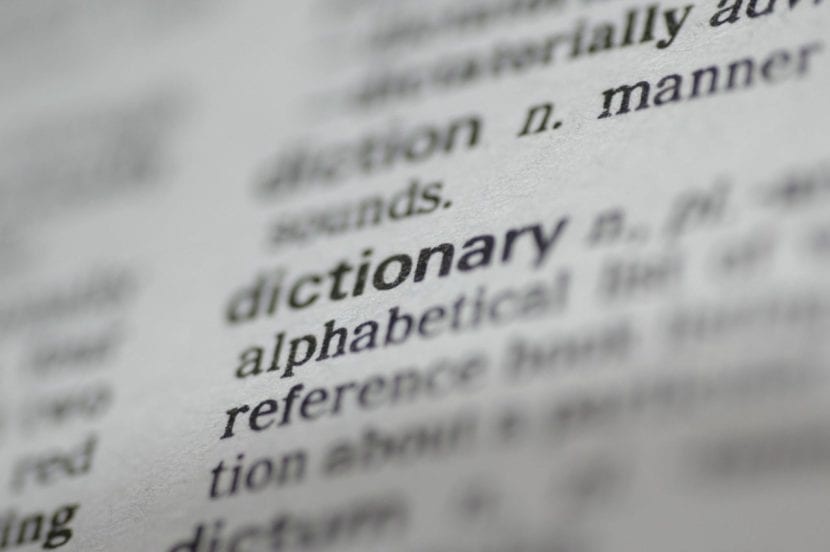
If every time you read an article about the world of 3D printing it gives you the feeling that you do not understand even half of what they are explaining to you or you think that they are speaking to you in a strange dialect of a tribe in Patagonia, surely it is because in the text there are many technical terms that nobody has explained to you. At HW we have set out to create a glossary that will serve as a reference for all first timers and grow as our community does.
Below you will find a glossary with some of the most used terms in the world of Print 3D and a brief description of its meaning.
Abs
It's a plastic commonly used as a material in 3D printing Due to the fact that it melts at a relatively easy temperature to reach (240ºC), it is soluble in acetone (which greatly facilitates cleaning of tools) and has very good technical characteristics (mainly it is hard and rigid). As negative points we can say that it is not biodegradable and is very sensitive to deterioration due to exposure to UV rays-
Print base
Smooth and level surface which is used as a starting point for prints, depositing the first layer of filament on it.
Mouthpiece or nozzle
Metal tip through which the molten metal comes out, the diameter of the hole that runs through it (usually 0.4 mm) defines the thickness of the filament thread that is deposited.
Warm bed
It is a surface that can be incorporated into the printing base and is characterized by allowing us to heat the base to the temperature that we consider appropriate, generally around 80ºC. This technique allows to minimize warpin problemsg by reducing the temperature difference between the material already deposited and the material coming out of the nozzle.
Correa
Usually made of rubber, used to transfer the turns of the motors (by pulleys) to the shafts and moving parts.
Healing
Software that are in charge of converting the STL files to the GCODE format used by the printer's electronics. Although most printers can work autonomously, they can also be controlled step by step by this program.
Brim
Technique used to avoid warping. It consists of adding flat and thin surfaces attached to the perimeter of our design in those problem areas, improving adherence to the base.
Extruder
It is the component of FDM printers that is responsible for pull the filament to advance it towards HOTEND. It is made up of gears and a stepper motor that regulates the speed with which the filament travels.
mfd
It is a printing technique which consists of depositing different flat layers of molten material superimposed on each other to achieve an object with volume
Filament
Es the material used by FDM printers to be able to create three-dimensional objects. Usually supplied in reels that the printers unroll as they need it.
gcode
It is a file that contains the information on how our designs should be cut into printable layers of the thickness we want (and our printer is capable of doing)
Hotend or fuser
It is the part that heats the filament to its melting point. Usually between 200ºC and 300ºC.
Cartesian printer
They are those printers that base the movements of the head and the printing base on the Cartesian axes (xyz).
Delta printer
They are those printers that keep the printing base fixed and move the head using a 3-arm system. These arms move vertically through the supports on which they are mounted, allowing the print head to be placed in the required xyz position at all times.
Maker community
Name by which the space shared by users the environment of 3D creation, open source, free hardware, DIY and in general all work that is done with collaborative spirit and encouraging the rest to make their own adaptations.
Step motor
It's a light duty engine type characterized by being able to make turns of few degrees with pauses between them. Thus we have total control of the pieces moved by them.
Pla
Plastic used for printing Biodegradable FDM (since it is composed of derivatives of corn). On the contrary, it has less rigidity than ABS plastic.
disaster
This is generally called the electronics set necessary for the control of all the processes carried out by the 3D printer.
Sla
Printing technique which consists of the solidification of a photosensitive resin by means of light patterns with which the different layers of material that will form our object are illuminated.
SLIC3R
Software that are in charge of converting the STL files to the GCODE format used by the printer's electronics. Although most printers can work autonomously, they can also be controlled step by step by this program.
STL
Is file format that has become the standard In the world of 3D printing, it allows us to transfer our designs from one program to another or to store our designs for future use.
WARPING
Es the demon!!. It is one of the worst problems that we can find when we print our objects. By depositing the hot material that comes out of the nozzle on the material that had already been deposited in the previous layer, we have an object with surfaces at different temperatures. As the upper layer cools, it contracts more than the lower layer that had already cooled previously. This difference in voltages causes objects to peel off the build platform into a concave shape.
We hope this glossary has been useful for you to understand a little more about this complex and exciting world. If there is a term that we have not included yet, do not hesitate to propose it in the comments and we will update the article as soon as possible.